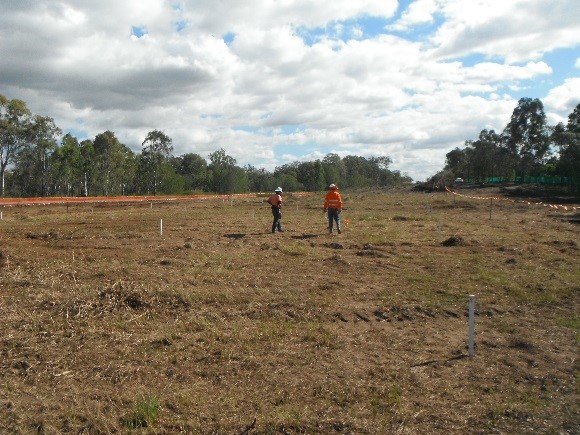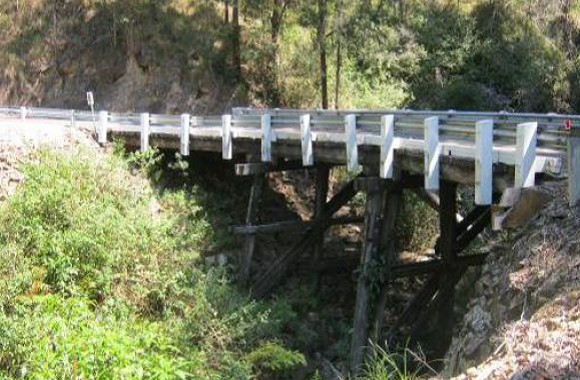Protecting Aboriginal and Torres Strait Islander cultural heritage
Cultural heritage
The Department of Transport and Main Roads recognises the significance of different cultures and the importance of managing Indigenous, historical, shared and natural heritage. This includes material remains such as:
- places and built structures
- landscapes and ecological communities
- documentary records and works of art and non-material culture such as religious beliefs and folklore
- ideas
- memories and skills
- practices.
Indigenous cultural heritage
 Shell midden on Moreton Bay Rail projectThere are 2 major pieces of legislation that govern Indigenous cultural heritage in Queensland — the Aboriginal Cultural Heritage Act 2003 and the Torres Strait Islander Cultural Heritage Act 2003. Both are administered by the Department of Aboriginal and Torres Strait Islander Partnerships. The Acts recognise that Aboriginal and Torres Strait Islander people are the primary guardians of their cultural heritage.
Shell midden on Moreton Bay Rail projectThere are 2 major pieces of legislation that govern Indigenous cultural heritage in Queensland — the Aboriginal Cultural Heritage Act 2003 and the Torres Strait Islander Cultural Heritage Act 2003. Both are administered by the Department of Aboriginal and Torres Strait Islander Partnerships. The Acts recognise that Aboriginal and Torres Strait Islander people are the primary guardians of their cultural heritage.
The Acts contain Duty of Care provisions that require those conducting activities in areas of significance to take all reasonable and practicable measures to avoid harming cultural heritage.
The Department of Transport and Main Roads has developed Indigenous cultural heritage policies and guidelines that complement the legislation.
These documents provide direction for:
- statutory obligations
- engagement with Indigenous people
- roles and responsibilities
- managing projects by incorporating processes for Indigenous cultural heritage into project management
- entering agreements with Indigenous parties
- a range of templates for use in development projects.
The department's policy and manual make a major contribution to the Queensland Government's initiatives for Aboriginal and Torres Strait Islander peoples. The department has worked with Indigenous communities on many projects to deliver necessary infrastructure while considering important cultural considerations for the local community. One example is the Moreton Bay Rail project, near Redcliffe, which involved managing a number of significant Aboriginal sites including a shell midden.
Historical cultural heritage
 Timber bridge on Springbrook Road Historical cultural heritage includes places and items relating to the occupation of the state by groups such as Europeans, Chinese, South Sea Islanders and other peoples. It may also include places such as missions, which have a heritage shared between these groups and Aboriginal and/or Torres Strait Islander peoples. Historical cultural heritage also includes shipwrecks.
Timber bridge on Springbrook Road Historical cultural heritage includes places and items relating to the occupation of the state by groups such as Europeans, Chinese, South Sea Islanders and other peoples. It may also include places such as missions, which have a heritage shared between these groups and Aboriginal and/or Torres Strait Islander peoples. Historical cultural heritage also includes shipwrecks.
The main state historical cultural heritage legislation is the Queensland Heritage Act 1992, administered by the Department of Environment and Science. It provides for the conservation of historical cultural heritage by protecting all places and areas entered in the Queensland Heritage Register.
The Act also regulates the discovery of historical archaeological artefacts and shipwrecks older than 75 years.
The Department of Transport and Main Roads is responsible for a number of heritage-registered places, including roads, bridges, war memorials and other places throughout Queensland. One example is the Springbrook Road and associated infrastructure, near the Gold Coast, which was entered into the register because of its historical, technological, social and aesthetic significance.
Approval may be required from the Queensland Heritage Council before undertaking work on these special places.
Cultural heritage enquiries:
Manager (Cultural Heritage and Native Title)
Email: TMR.heritage@tmr.qld.gov.au

- Last updated 9 November 2022

